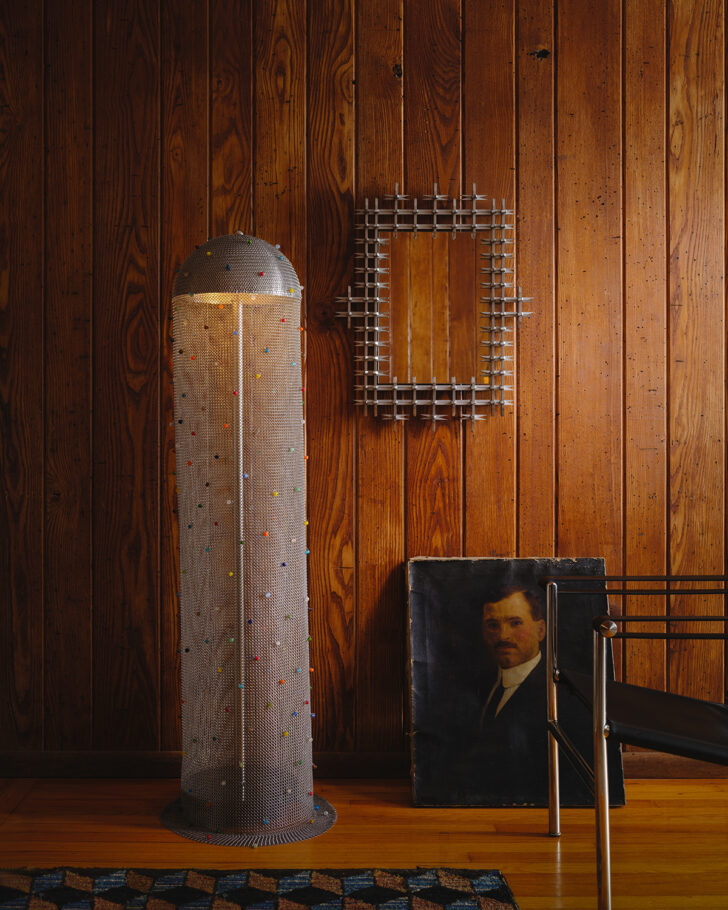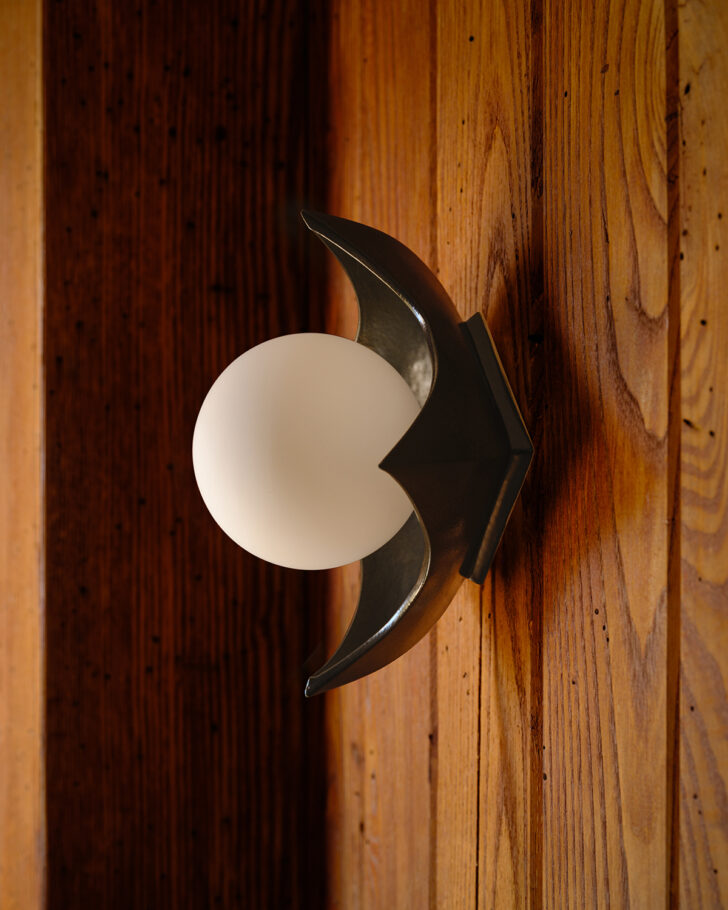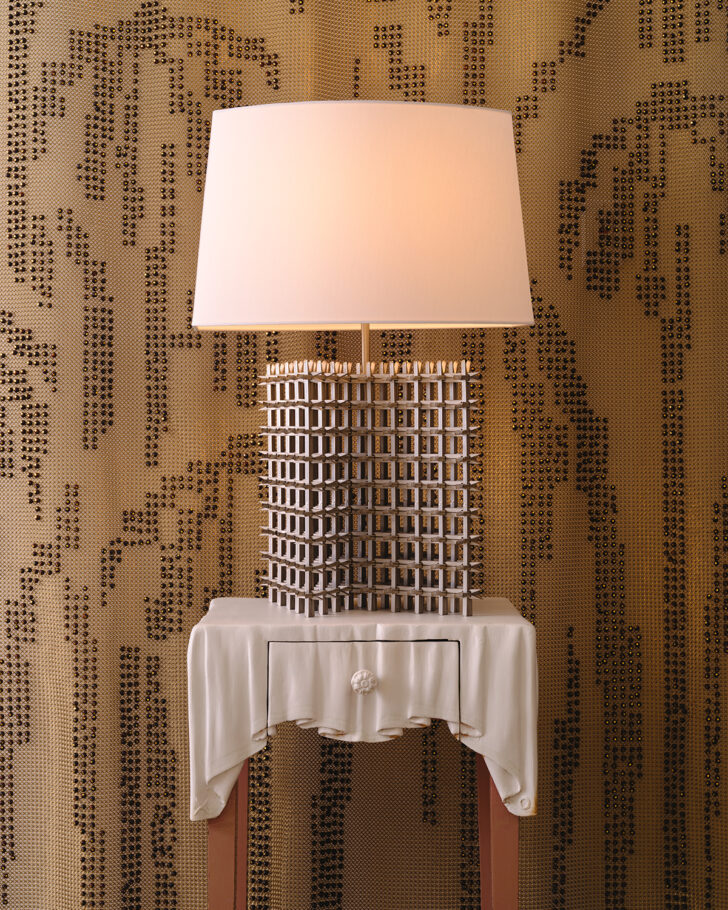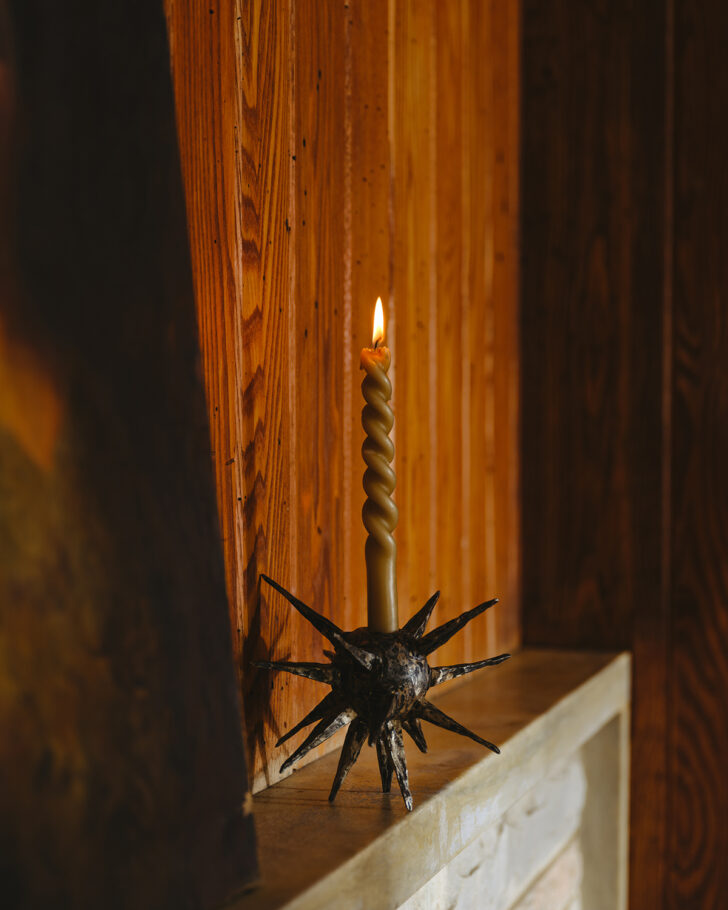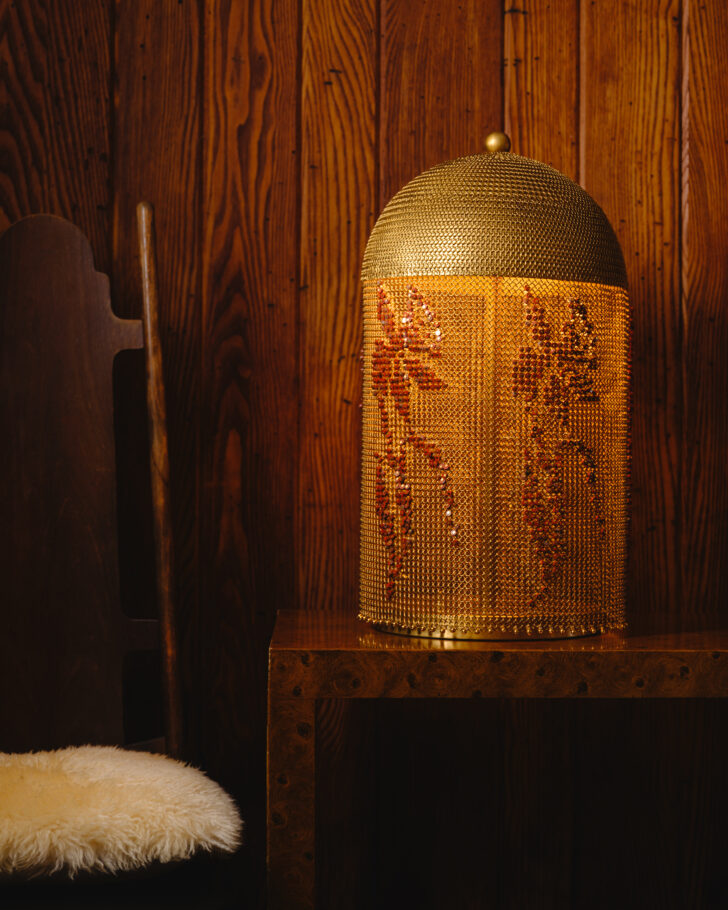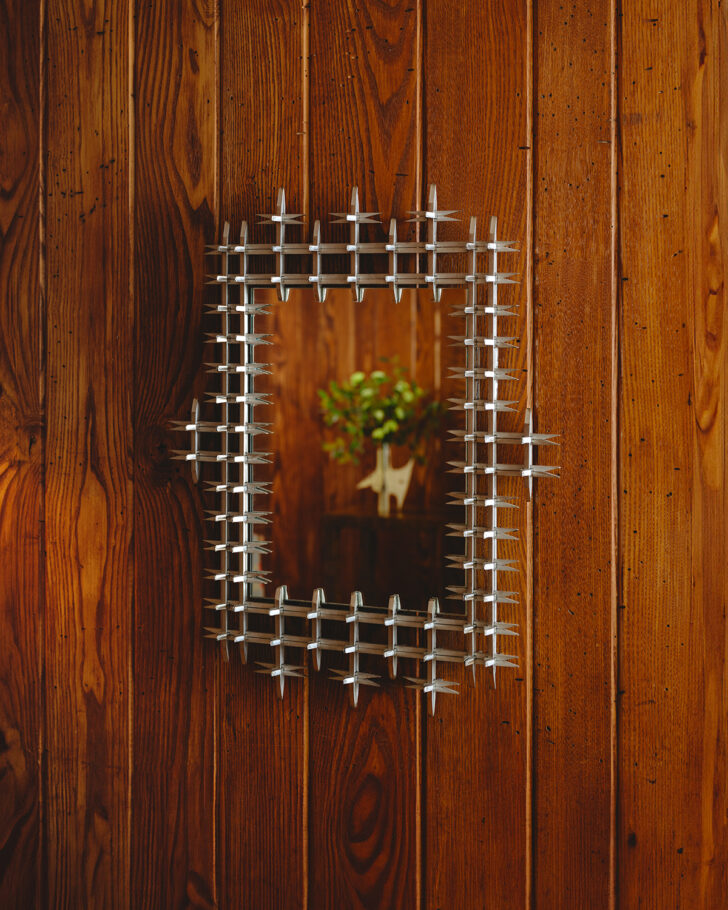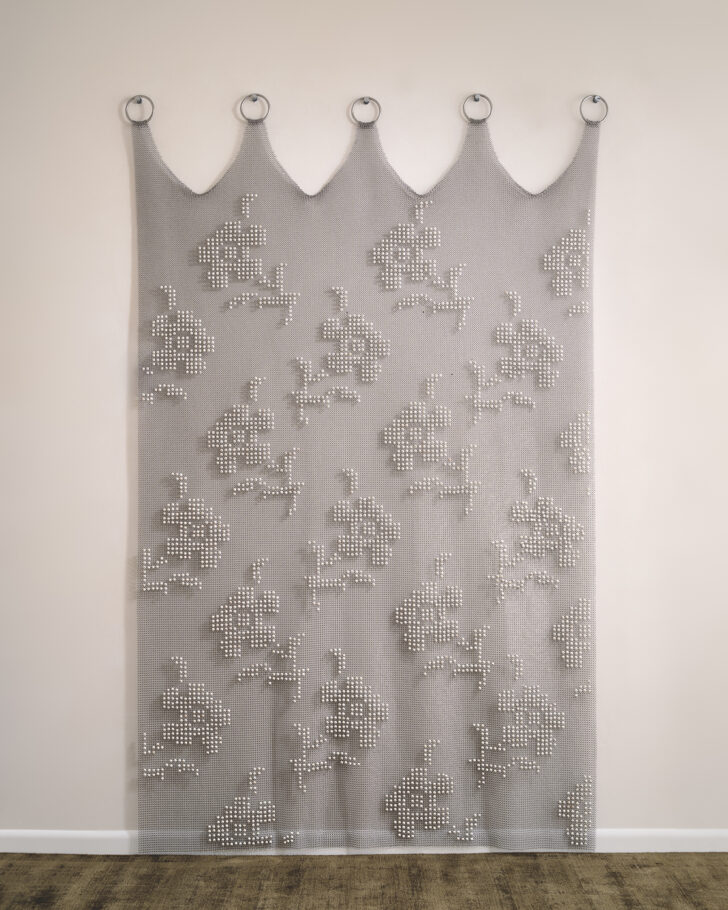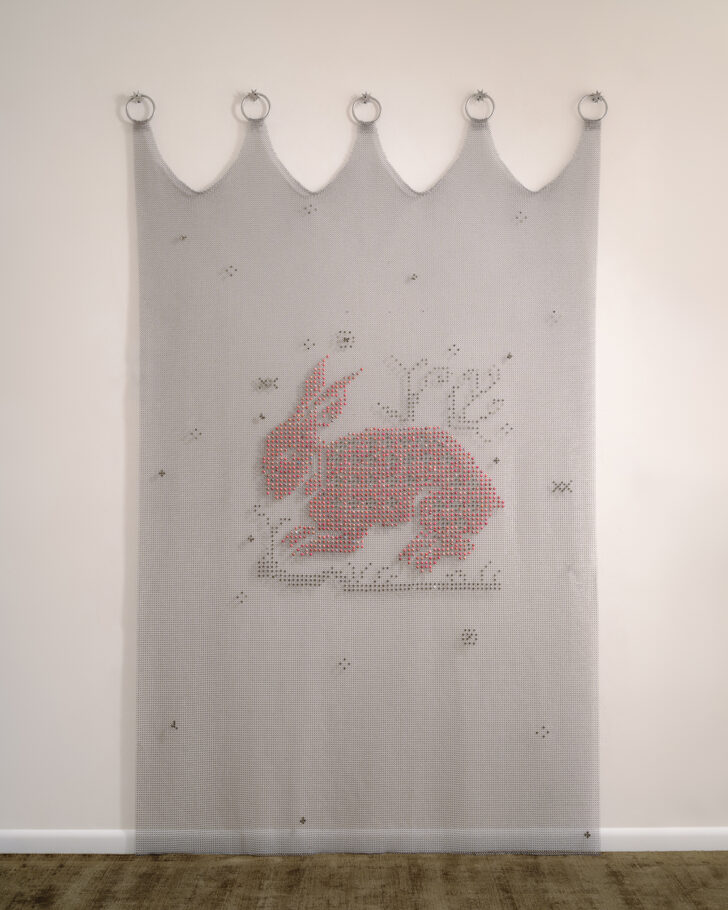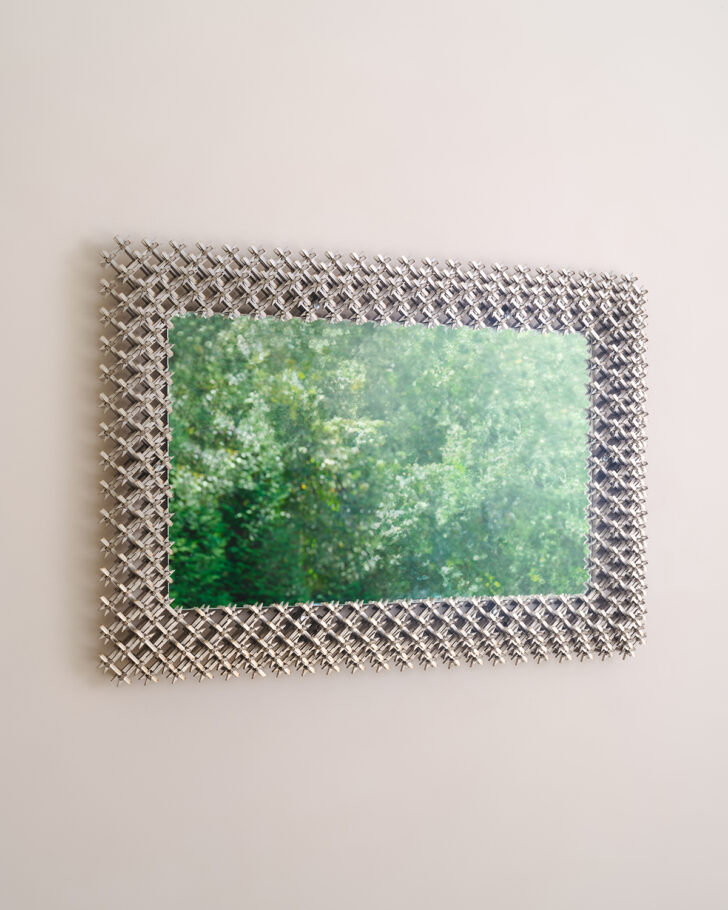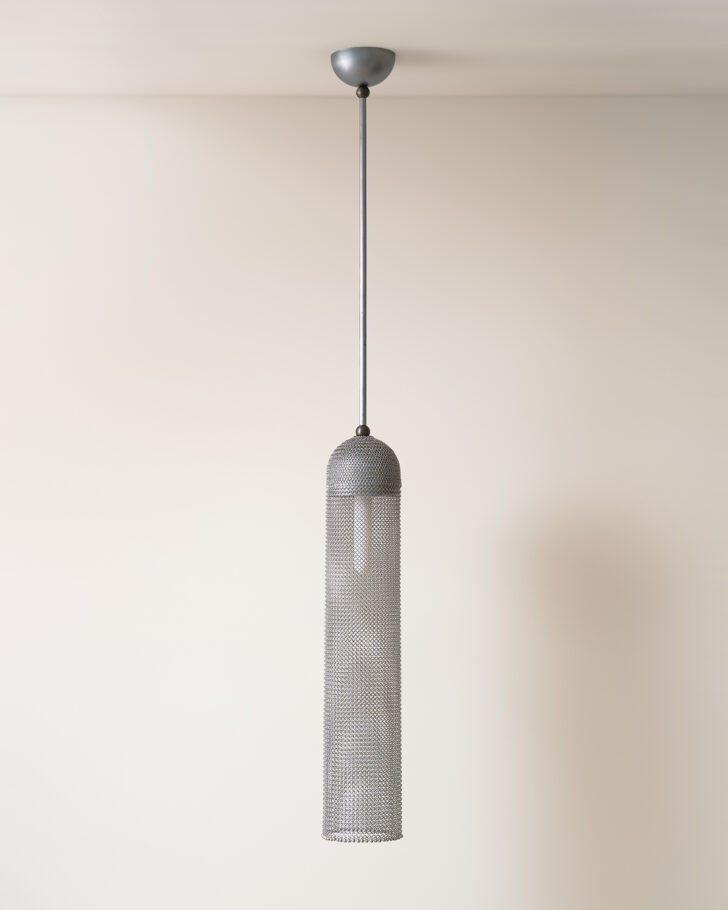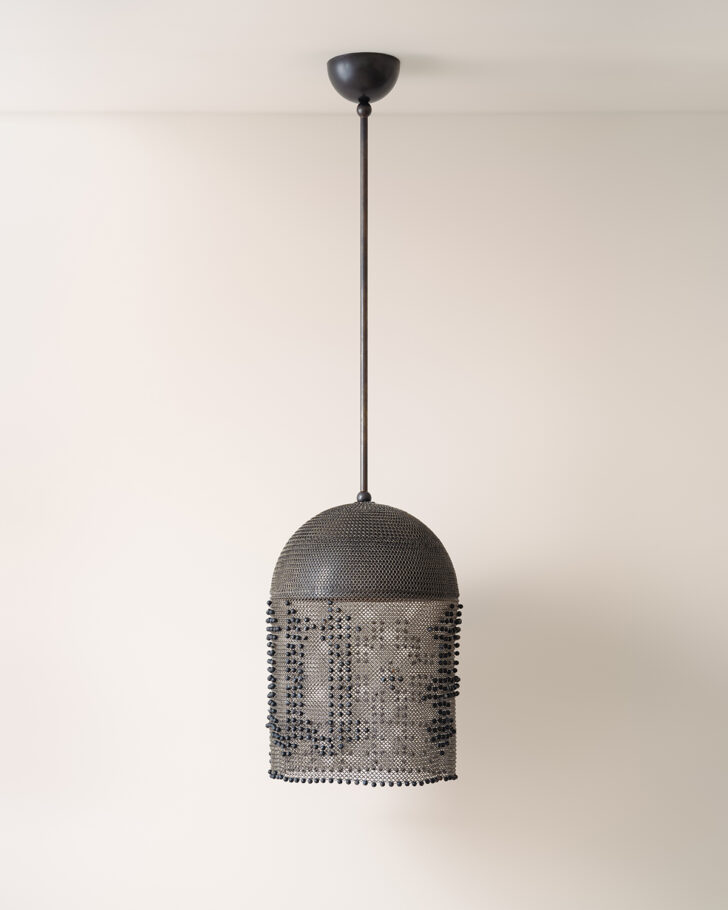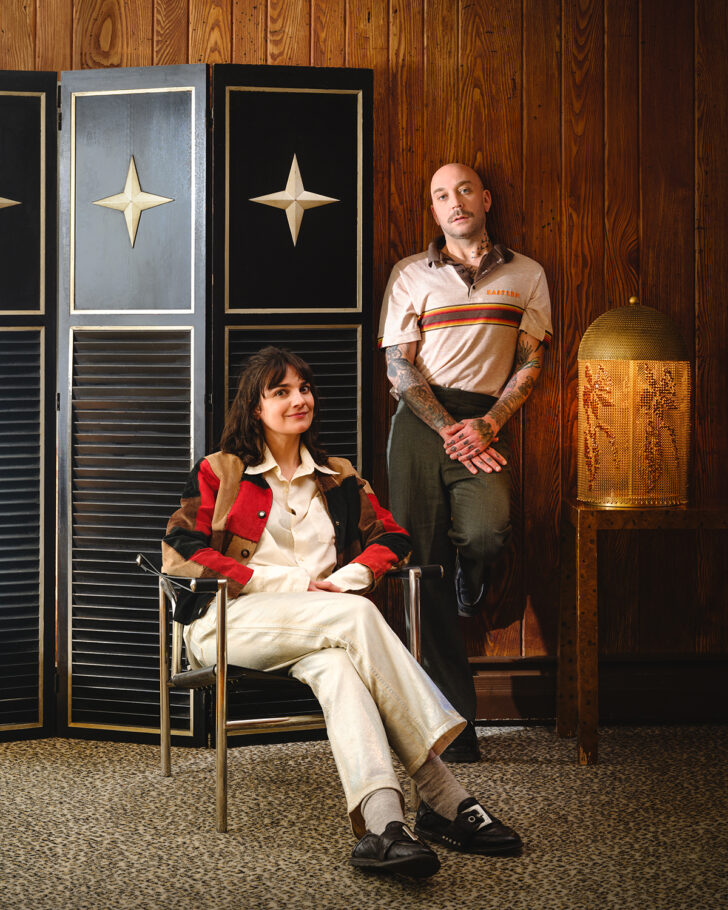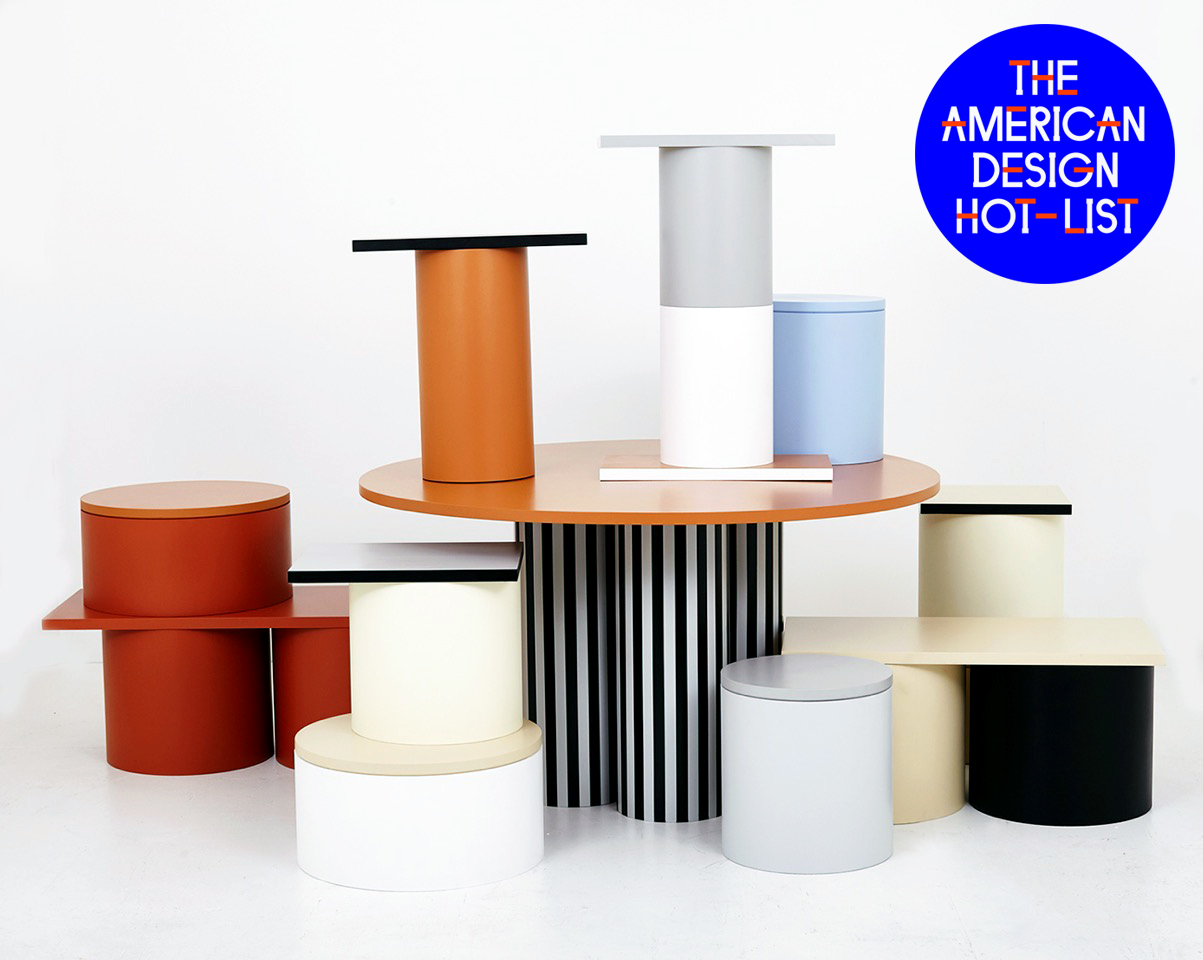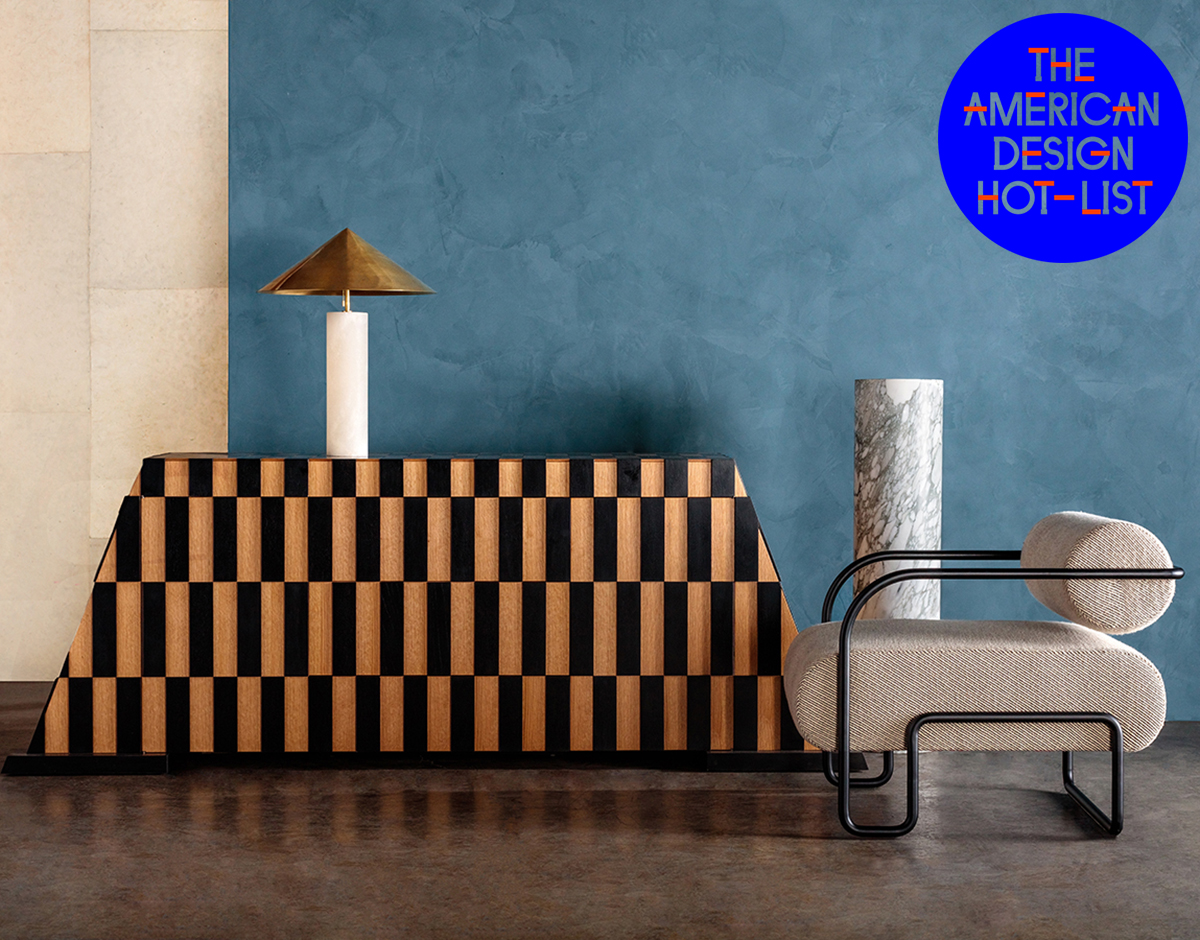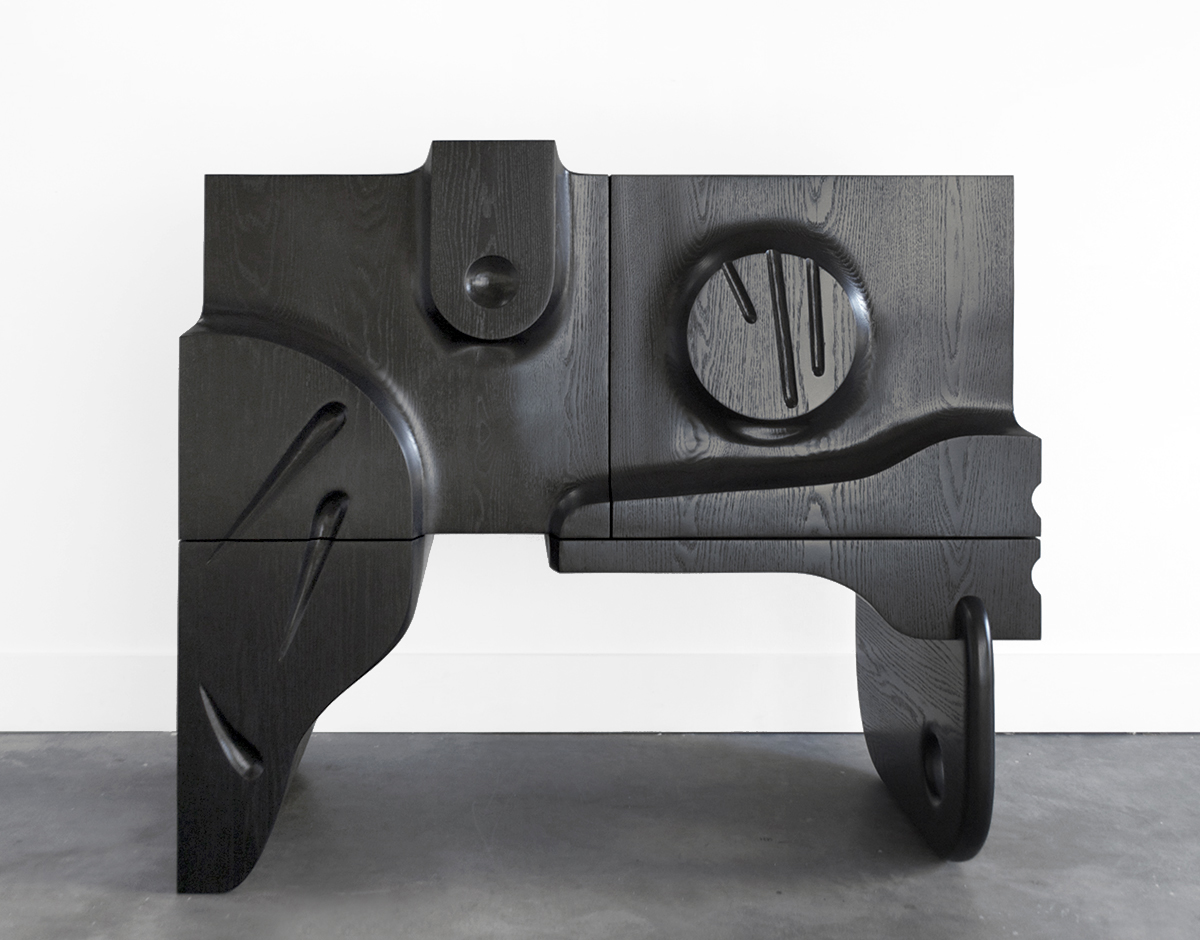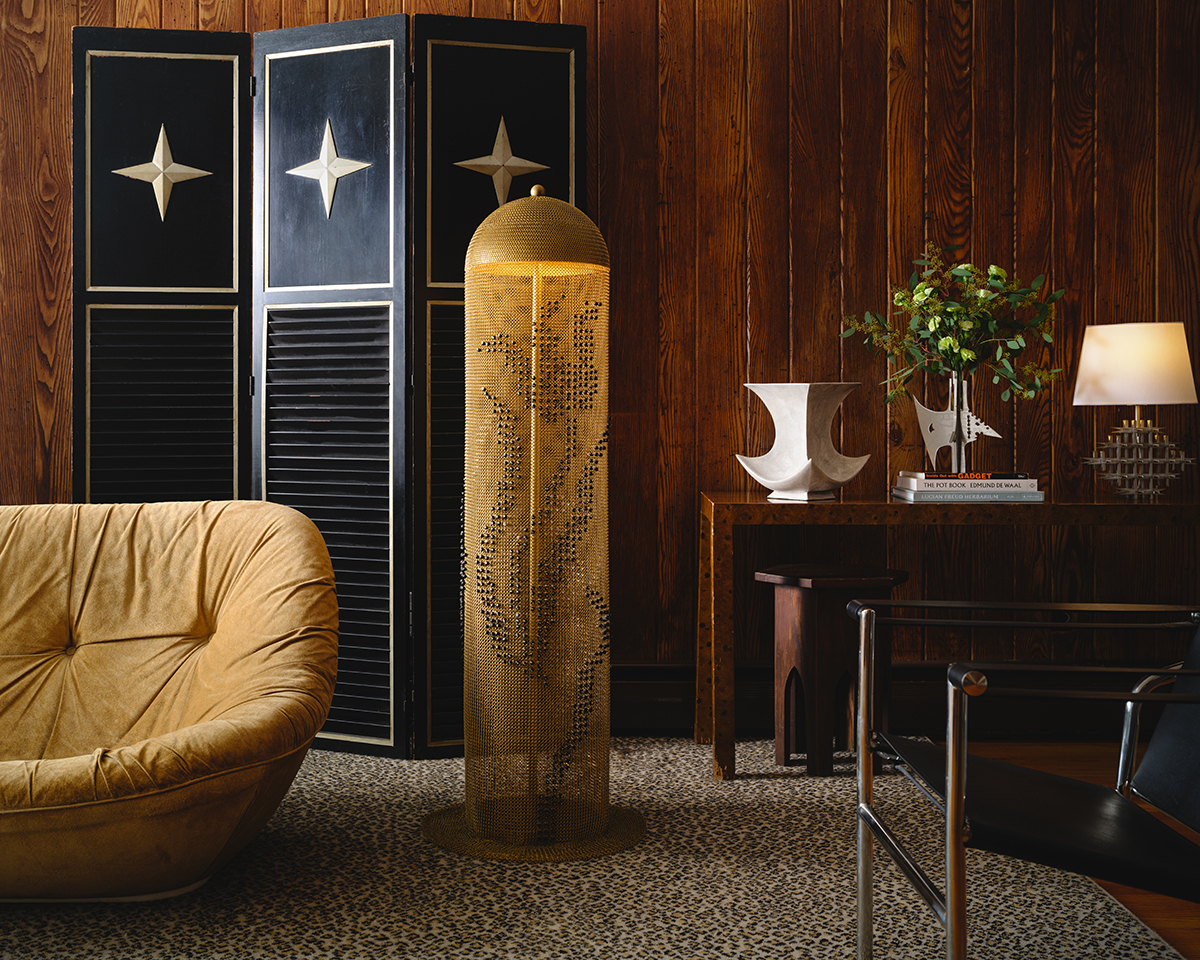
American Design Hot List 2024
Wretched Flowers
New Fairfield, Connecticut, wretchedflowers.com
Husband and wife duo Loney Abrams and Johnny Stanish collaborated for more than a decade before launching Wretched Flowers as a furniture studio this past May. Their gorgeously goth chainmail curtain, decorated in a delicate floral, studded with antique white jade beads, and on view at Jacqueline Sullivan Gallery last year, set our hearts aflame. One look at the rest of their work — the cascading metal mesh lampshades, the spiky wall-mounted sconces, the mirrors encircled by thorns — and we were hooked. Though often inspired by ancient craft, they’ve also birthed one of the more ingenious contemporary design hacks we’ve seen — on their site, as “Reched Flours,” they sell dupes of their own work, replicating their most popular pieces in black 3D-printed bioplastic rather than metal, selling them at a much more accessible price point, and, in effect, short-circuiting the whole knockoff system.
What is American design to you, and what excites you about it?
American design draws from such an incredible diversity of influences. The lack of a shared heritage allows for a freedom and range that’s really exciting. There’s no singular lineage or fixed aesthetic we’re bound to follow. Instead, we create meaning and context by pulling together references from disparate sources. And if the results are contradictory — well, that’s American design.
What are your plans and highlights for the upcoming year?
Right now we’re very focused on designing a new collection for 2025 and we’re still ironing out how and where we’ll exhibit it. Excited about the possibilities! And we’re decorating our new-ish house, where we’ll happily host new and old friends.
What inspires or informs your work in general?
The Arms and Armor collection at The Met. Tramp Art from the Great Depression. Textiles, specifically filet crochet. All of our pieces directly reference these influences, updating ancient artistry for contemporary living. Our chainmail pieces, for instance, were inspired by medieval helmets rimmed with hanging mesh, which we saw at The Met. Those forms evolved into our chainmail table and floor lamps — transforming symbols of violence into sources of light and warmth. We incorporate gemstone beads into our chainmail lighting and tapestries, arranging them in patterns sourced from historic weaving templates. Mixing chainmail with domestic textile references adds a feminine sweetness to an otherwise brutal and masculine material.
The same ethos applies to our “Crown of Thorns” series, named after a joinery technique from Tramp Art — a Depression-era folk art where traveling tradesmen repurposed discarded cigar boxes into intricate works. We’ve reimagined this lost craft using laser-cut stainless steel in place of wood. This mix of weapon-like steel and folksy Americana creates a contrast we’re continually drawn to.
